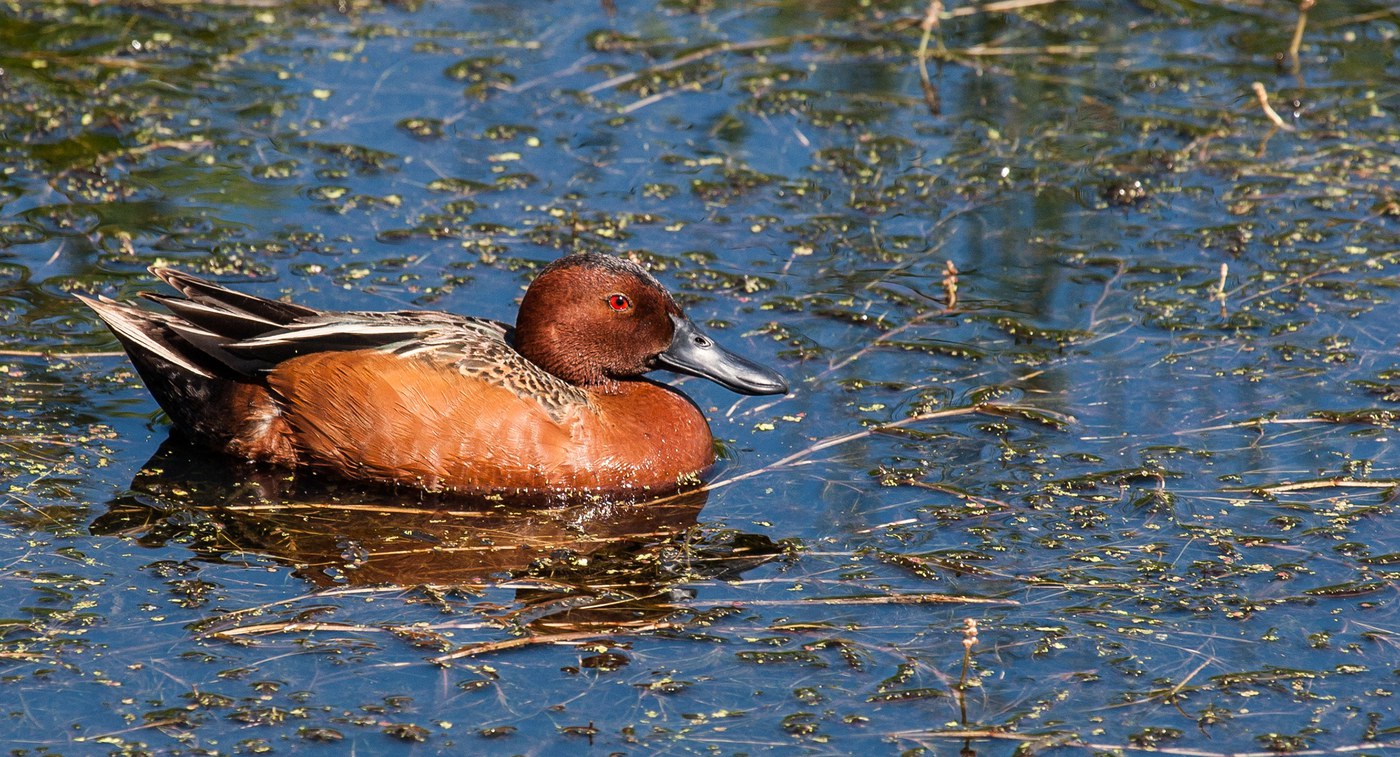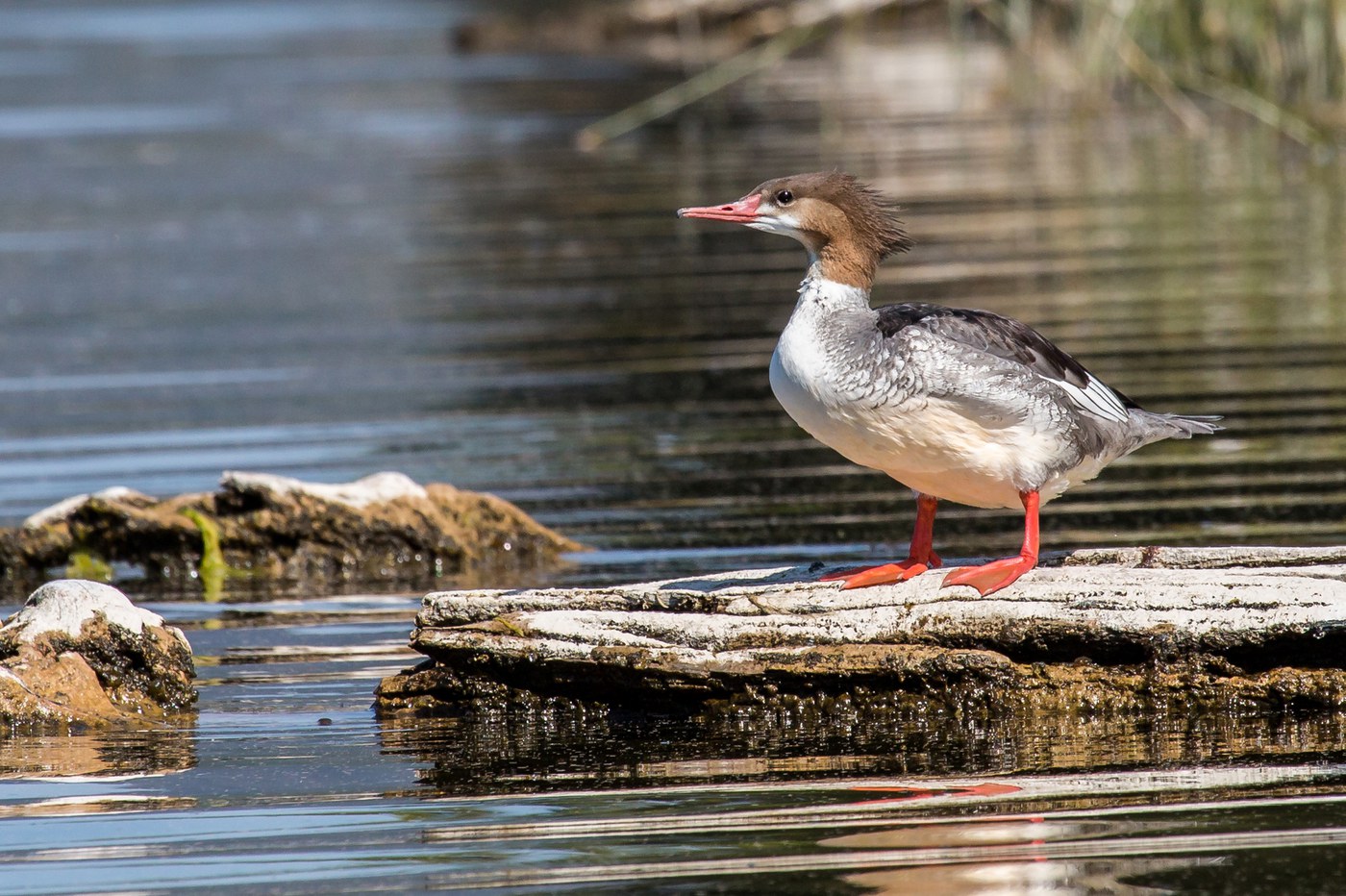Whether flying in the sky or roaming about our rivers’ banks, Central Oregonians are no strangers to waterfowl. New research shows, however, that climate change may drastically alter our experiences with waterfowl.
Some of my favorite memories of childhood come from parks, but there is one park from that most often comes to mind. Growing up, my folks would walk me through the park and, while I loved the swing set and to run in the shade of the towering pines above me, my favorite place to be was on the bank of the duck pond. The ducks were interesting, wild, weird and yet so approachable. The way they shook their bottoms as they walked, the tilt to their heads as they eyed my peanut butter and jelly sandwich, and the ways they talked with one another; I could’ve sat on those benches watching the ducks for hours.

The abundant waterfowl in Central Oregon flock to the waterways of the Deschutes River for many of the same reasons we do: a place to thrive, a place to be healthy, and a place to grow their families. Throughout the year our communities can find a great diversity of waterfowl species including tundra swans, Canada geese, mallards, gadwalls, and common mergansers. During the spring bird sightings become even more spectacular. Each year billions of birds migrate during the spring and fall on the Pacific flyway from as far north as Alaska to as far south as the Patagonian wetlands. They follow food sources, find breeding grounds, or travel to overwinter. More than 2 million of the birds passing over our region are waterfowl.
According to recent research, however, many of these species are experiencing a decline in numbers. In a recent study compiling decades of data, researchers found that high temperatures, low levels of precipitation as well as hotter and drier summers are having negative impacts on our waterbirds.
In research done by Susan Haig, senior scientist with the US geological survey and professor of wildlife ecology in OSU’s college of agricultural sciences the report explains, “We found reasons to be concerned that changing water conditions might seriously impact the viability of the flyway as a whole.”
As we continue to feel the changes in temperature, precipitation, snowmelt, and seasons it is no question that over time these changes are affecting our water and that water is affecting our birds.
Spring snowmelt is arriving earlier and lasting for a shorter period of time, this leaves migrating birds without the water they need during the times in their migrations when they need it most. Hot and dry summers are leaving the birds with less water and saltier water that can harm young birds.

In this study, the question does not seem to ask “if” these changes are happening, but rather how much?
“These are silent changes, not dramatic from one year to the next,” Ivan Arismendi, an assistant professor in the OSU Department of Fisheries and Wildlife reported in the new research. “It’s clear the whole ecosystem has changed in the last 35 to 40 years. These changes are small but consistent and important. They cause changes in the whole community, not just one species.”
Where we see effects for waterfowl migrations now, we may see effects for other species later.
Within the study John H. Matthews, with the Alliance for Global Water Adaptation, claims, “Migrating, breeding, developing and post-breeding birds need water, but they also need good quality water. This is one of the first studies to show that climate change is altering water quality. If shifts in climate can alter water quality for birds, then climate change can alter our water quality too. These bird populations are the canary in the coal mine for all of us.”
A canary in the coal mine.
Climate changes are affecting the places we love in ways we can see and ways we can’t see. It’s no surprise that fire seasons are burning hotter and longer, but the slow and gradual changes in our water and our air are also continuing to build. Whether it’s because we love to float along our rivers, wish to continue watching ducks in wonderment, or hope to protect clean air for our kids; paying attention to the effects on our waterfowl and the streams they rely on can give us insights to the challenges of the future.
Combatting a changing climate cannot be focused on water or wildlife alone. Our streams, our air, the creatures and plants we share this place with, and our people are all to be affected. To face these challenges it will be more important than ever that we work together, listen to one another, think critically beyond our individual circumstances, and learn continuously.
My first step is to take a walk to the park and remember how wonderful these ducks are.
Learn More:
- Read the whole study on how climate is affecting migrating birds here.
- Join our volunteer naturalists on a guided bird walk.
- Learn about fall migratory birds in Central Oregon.
- Dive into the Land Trust's Climate Change Strategy.
- See the birds at one of Central Oregon's Birding Hotspots: Camp Polk Meadow Preserve.


